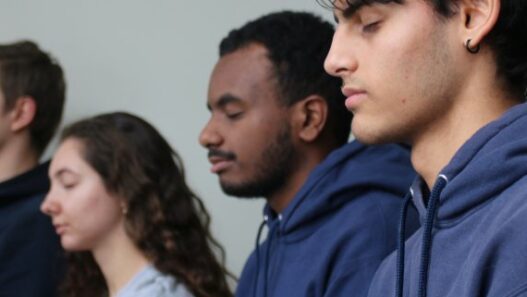Effects on regional cerebral blood flow of Transcendental Meditation
Authors: Jevning, R.; Anand, R.; Biedebach, M.; Fernando, G.
Published: Physiology & Behavior, Volume 59, Issue 3, March 1996, pages 399–402
Methods: Previous blood flow measurements in this laboratory have indicated increased nonrenal nonhepatic blood flow during behaviorally induced rest states, especially during the stylized mental technique of Transcendental Meditation (TM). We have hypothesized that increased cerebral blood flow (CBF) may account for most of the increased nonrenal nonhepatic blood flow during Transcendental Meditation.
Results: In this report we describe increased frontal and occipital cerebral blood flow in Transcendental Meditation determined by the electrical impedance plethysmographic methodology known as rheoencephalography (REG), which allows noninvasive, nondisturbing, continuous cerebral blood flow monitoring. We also report high correlation between increased cerebral blood flow and decreased cerebrovascular resistance (CVR) during Transcendental Meditation, suggesting that a contributing vascular mechanism to the increased cerebral blood flow may be decreased cerebrovascular resistance. Because only a small amount of stage 1 sleep was observed during Transcendental Meditation and because stage 1 sleep has been reported to be accompanied by decreased cerebral blood flow, we believe that sleep did not contribute to the CBF increase. The data of this study are consistent with the hypothesis that blood flow changes during Transcendental Meditation comprise a patterned response subserving needs of increased cerebral activity.
To view full article:
Unfortunately, we have been unable to make the full text of this scientific journal article available to you due to copyright issues. You can, however, use this link to purchase the right to view the full text from the publisher. Please note that TMhome.com is in no way affiliated with the publisher.
![]() See other recent scientific research articles on Transcendental Meditation!
See other recent scientific research articles on Transcendental Meditation!



















